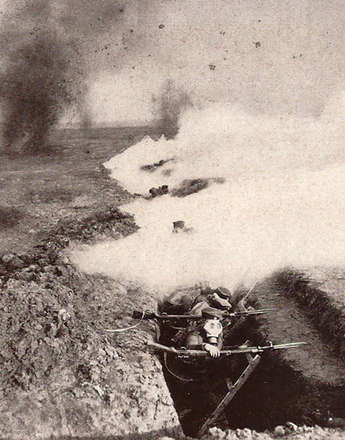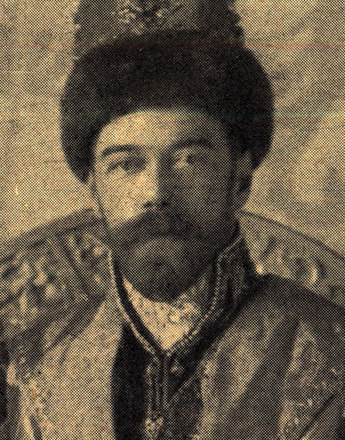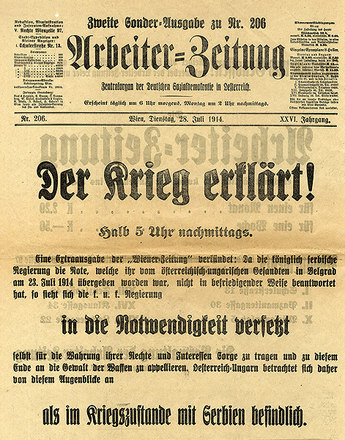On 7 July 1914 the Common Council of Minsters of Austria-Hungary called for a ‘swift resolution of the conflict with Serbia, through war or through acts based on Serbia being an enemy country.’ This resolution meant that the sails had been set for war.
The leaders of the government followed a confrontational course with Serbia in the knowledge that this would mean a war with Russia and subsequently the beginning of a conflict affecting the whole of Europe.
The assassination of the heir to the Austrian throne was interpreted as an act of aggression on the part of Serbia and thus as a casus belli. The general public were to be given the impression that it was no more than a war of self-defence and that the attack on Serbia was simply a ‘just punishment’ for Sarajevo. In a belittling of the imminent conflict, the campaign was described as a ‘penal expedition’.
An ultimatum was to be addressed to Serbia containing a catalogue of concrete demands formulated in such a way that Serbia could not possibly accept them. This would open the way for a radical solution in the form of military intervention; in the Council of Ministers it was generally considered that a purely diplomatic triumph would be of no value at all, even if it led to Serbia being humiliated.
Vienna left two weeks until the publication of the ultimatum, wishing if possible to first acquire proof – which was not found – of members of the Serbian government having had prior knowledge of the Sarajevo assassination. The role of the Serbian government in the assassination is still unclear. Historians generally consider that the government may well have known about the plot, but without being involved in its planning. The absence of incriminating evidence was even confirmed by Austrian officials. Nevertheless, the message to the general public was that Serbia was the aggressor and would have to pay for its misdeed.
A further reason for the delay was the meeting scheduled for 20 July between the French President Raymond Poincaré and Tsar Nicholas II. In order to prevent the French and Russians from coming to an immediate agreement that might make them into Austria’s enemies, Austria waited until this meeting had been held before taking active steps.
In all this Vienna was concerned to involved Germany as its partner in the Dual Alliance. The German Minister in Vienna Heinrich von Tschirschky was involved in the decision-making process, attending important meetings. From Germany’s point of view, however, the conflict between Vienna and Belgrade was a matter of secondary importance and principally of interest in that it gave them a welcome pretext for intervening on the side of their ally Austria-Hungary. In fact, from the very beginning Berlin’s principal concern was for a showdown with France.
The final decision in favour of war was taken in the meetings of the Council of Ministers between 14 and 19 July. A statement was formulated announcing the official standpoint that an invasion was by no means to be interpreted as a war of conquest against Serbia, though it might lead to the temporary occupation of certain Serbian territories. Internally, however, it was left open what would take place after Serbia’s defeat, which was expected to happen within a short period of time.
Translation: Peter John Nicholson
Bihl, Wolfdieter: Der Erste Weltkrieg 1914–1918. Chronik – Daten – Fakten, Wien/Köln/Weimar 2010
Hirschfeld, Gerhard/Krumeich, Gerd/Renz, Irina (Hrsg.): Enzyklopädie Erster Weltkrieg. Aktualisierte und erweiterte Studienausgabe, Paderborn/Wien [u.a.] 2009
Leidinger Hannes/Moritz, Verena: Der Erste Weltkrieg, Wien [u.a.] 2011
Rauchensteiner, Manfried: Österreich-Ungarn und der Erste Weltkrieg 1914–1918, Graz 1998
Rauchensteiner, Manfried: Der Erste Weltkrieg und das Ende der Habsburgermonarchie 1914–1918, Wien u. a. 2013







